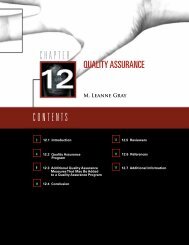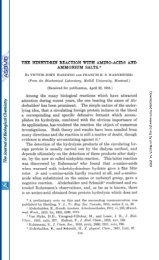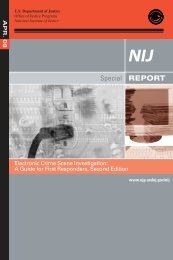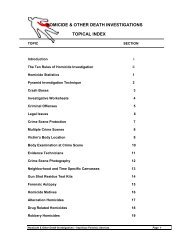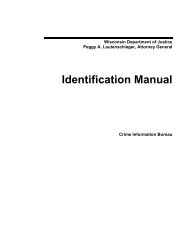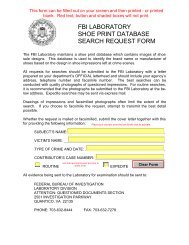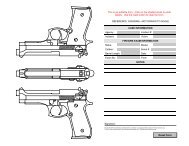Mass Fatality Incidents: A Guide for Forensic Identification
Mass Fatality Incidents: A Guide for Forensic Identification
Mass Fatality Incidents: A Guide for Forensic Identification
- No tags were found...
You also want an ePaper? Increase the reach of your titles
YUMPU automatically turns print PDFs into web optimized ePapers that Google loves.
Section 4.4: <strong>Identification</strong> of Human Remains—DNA AnalysisI. Initial ConsiderationsPrinciple. For cases involving mass fatalitiesand/or highly fragmented remains,DNA provides an essential component ofthe identification process. DNA analysiscan 1) identify the victims, 2) associatefragmented remains, and 3) assist in ongoingmedical and legal investigations. Themedical examiner/coroner is responsible<strong>for</strong> making the initial decision as to theprimary goal of the DNA identificationef<strong>for</strong>ts: whether to pursue a medical legalfinding of death <strong>for</strong> each victim or to identifyall biological material recovered. Thisdecision will have a significant impact onthe scope of the identification process.Procedure. The availability and utilizationof DNA resources will vary according tothe scope of the incident as well as thejurisdiction. The medical examiner/coroneris expected to evaluate the available DNAtesting resources and establish <strong>for</strong>malagreements with laboratories capable ofsupporting the jurisdiction’s mass fatalitycontingency plan.A. Resources. The ready availability ofhigh-throughput DNA analysis is capableof meeting the many complexitiespresented by larger mass fatality incidentsand/or severe victim fragmentation.Smaller incidents may not requirespecial resource considerations relatingto specimen tracking and DNA analyticalthroughput. However, specimentracking, data management, and theinterpretation of results representsignificant challenges. It is essential tohave an inventory system available tolog and track potentially tens of thousandsof specimens. Testing laboratoriesare expected to use specializedsoftware to facilitate the tracking,searching, and interpretation of largenumbers of DNA profiles.B. Technology. The medical examiner/coroner, in consultation with the DNAlaboratory, is expected to determinewhich DNA analysis methods will beused to assist in the identificationprocess.C. Timelines. The medical examiner/coroner, in consultation with the DNAlaboratory, is expected to establishrealistic timelines <strong>for</strong> the completion ofthe DNA identification process basedupon an assessment of the laboratories’capacities and data interpretationcapabilities. The medical examiner/coroner is expected to resist adjustingtimelines based on influences thatcould be detrimental to the overallidentification ef<strong>for</strong>t.Summary. Adequate resources and realistictimelines play a significant role in determiningthe extent to which DNA analysismay be used in the identification process.II. Sample Collection <strong>for</strong> DNAAnalysisPrinciple. DNA analysis is a comparisonscience requiring one or more valid referencesamples to identify human remainsaccurately. Three types of biologicalsamples are collected to conduct DNAanalysis—A. Human remains.B. Appropriate family references.C. Direct references (e.g., biological specimensand personal effects).Collect samples in a manner that preventsloss, contamination, or deleterious changeand that involves the initiation of a properchain of custody. Ensure that sample preparationincludes provision <strong>for</strong> specimen25





